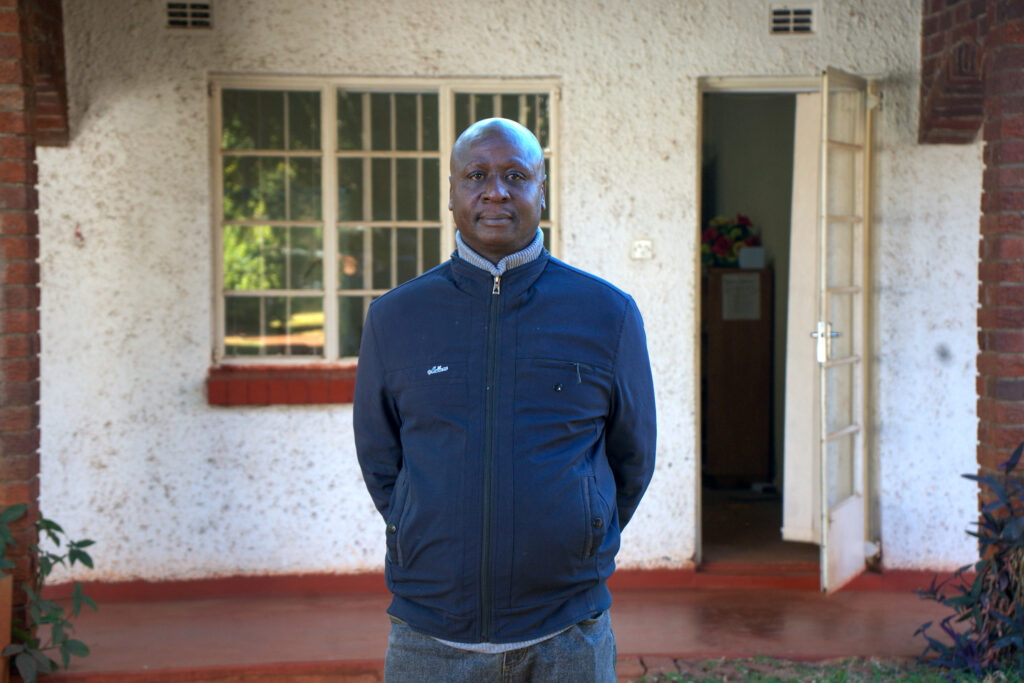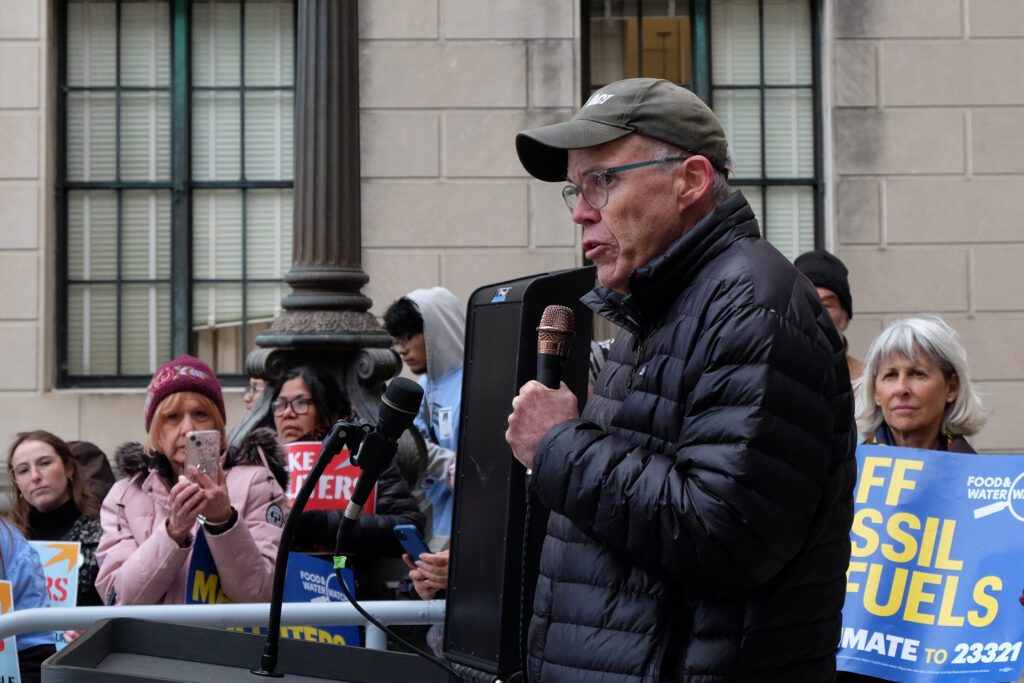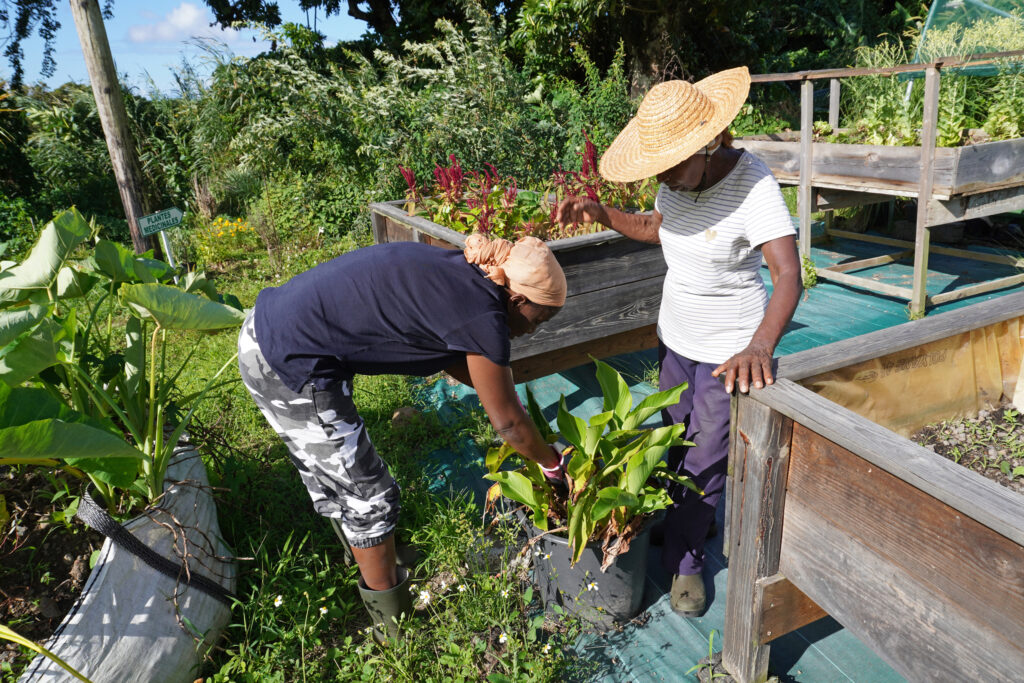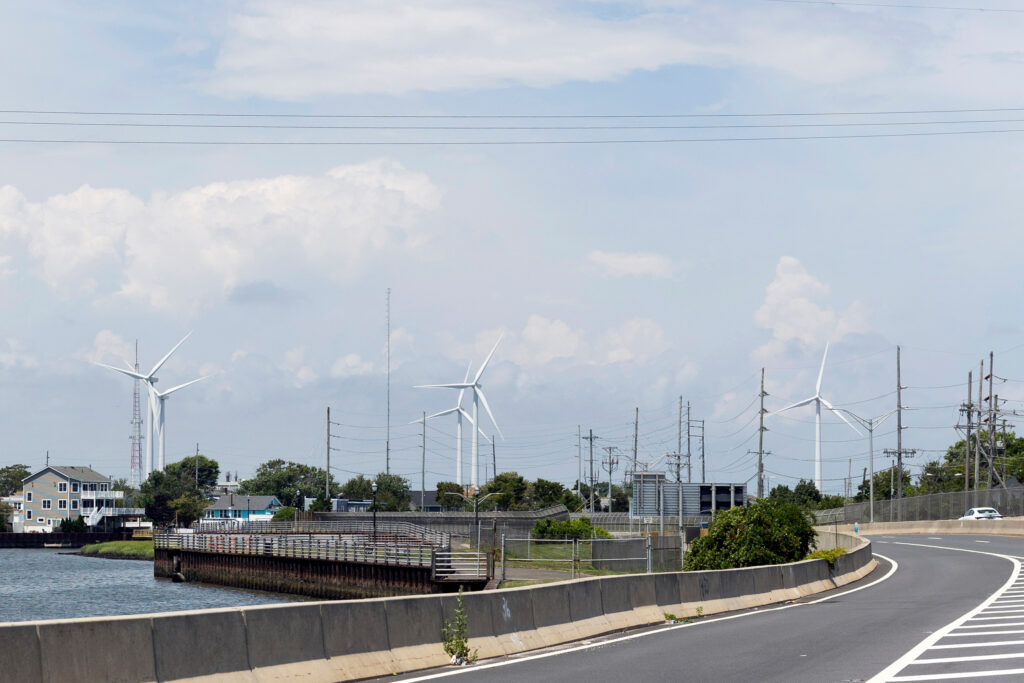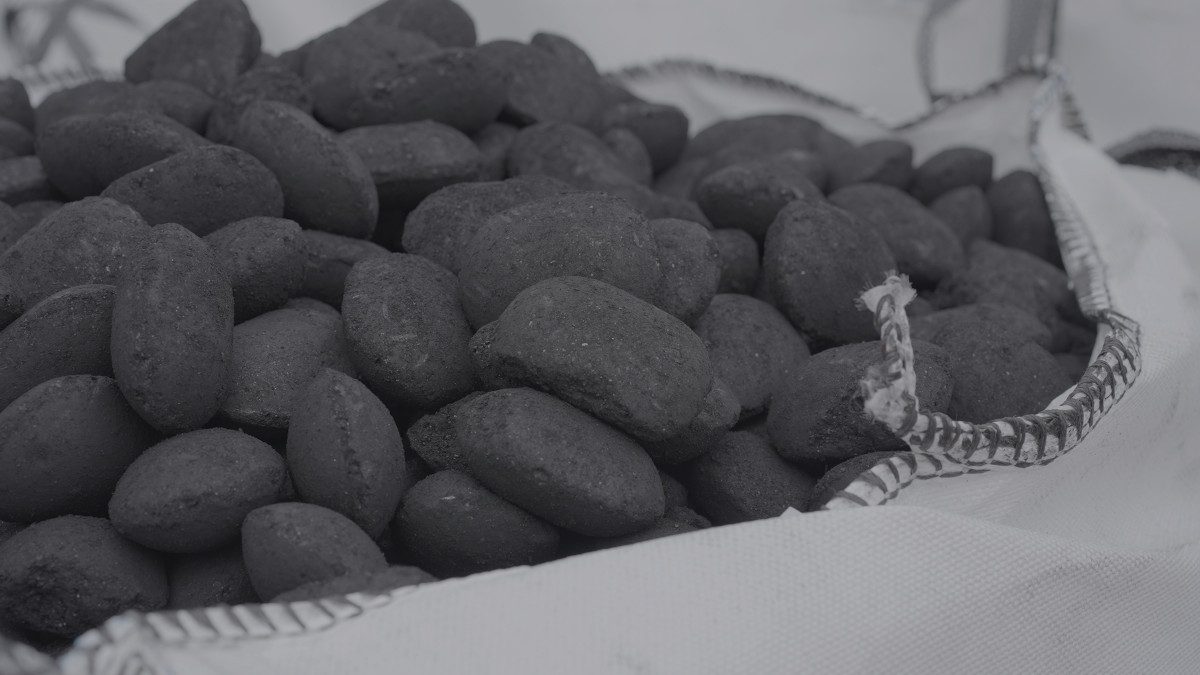From our collaborating partner “Living on Earth,” public radio’s environmental news magazine, an interview by Managing Producer Jenni Doering with Kyla Bennett, who worked with the EPA for 10 years and is now Public Employees for Environmental Responsibility’s director of science policy.
If you’ve seen the movie “Dark Waters,” you may remember the story of Virginia farmer Wilbur Tennant, whose cows mysteriously lost weight, developed tumors and died.
His farm was just downstream from a landfill where Teflon manufacturer DuPont illegally dumped thousands of tons of toxic sludge containing PFOA chemicals, poisoning the cows that were drinking from the local stream. That real farmer was one of the first whistleblowers whose persistence in the 1990s lifted the veil on the dangers of PFOA and other PFAS known as “forever chemicals.”
We are now learning that the presence of PFAS on farms is a much more widespread problem. A 2022 study by the Environmental Working Group found that about 20 million acres of cropland in the United States may be contaminated from PFAS-tainted sewage sludge spread on fields as fertilizer. In 2022, Maine became the first state to ban the practice of using treated sewage as fertilizer after officials discovered astronomical levels of PFAS in water, crops, cattle, soil and even farmers’ blood.
Adam Nordell was owner of Songbird Farm, one of four Maine farms that had to be shut down.
We’re hiring!
Please take a look at the new openings in our newsroom.
See jobs
“Discovering PFAS on our farm was incredibly devastating,” Nordell told Living on Earth. “This directly undermined what we’re trying to do on our farm. All farmers that I know work incredibly hard to steward the land, to perhaps pass the farm on to the next generation and the last thing any farmer wants to see is their land and their water contaminated with forever chemicals.
“Farmers are also mission driven; we’re working hard for low pay. And you know, we all want to produce a safe product. We all are working to nourish our customers to nourish our communities. And the last thing any farmer wants to do is to sell contaminated food.”
Now, watchdog group Public Employees for Environmental Responsibility, or PEER, and five Texas farmers have filed a petition to take the Environmental Protection Agency to court for allegedly failing to protect the public from the risk of sewage sludge contaminated with PFAS.
Kyla Bennett worked with the EPA for 10 years and is now PEER’s director of science policy. This interview has been edited for length and clarity; we contacted the EPA for a response but did not hear back by press time.
JENNI DOERING: How exactly does PFAS, these forever chemicals, end up in biosolid fertilizer used across the United States?

KYLA BENNETT: Well, “biosolids” is actually just a euphemism for sewage sludge. Since PFAS is so ubiquitous in consumer products and food and water, anything that we flush down the toilet or put into the sink goes into a wastewater treatment system and will end up going into biosolids, because the wastewater treatment plants are not designed to remove PFAS. And indeed, they actually create more PFAS than they remove.
DOERING: How are they creating more?
BENNETT: We don’t really know for sure, except that PFAS chemistry is complex. And what happens is that whatever the treatment is in the wastewater treatment plant, what it’s doing is certain short-chain PFAS, or certain compounds, are recombining and forming more PFAS. Studies have been done that show the amount of PFAS in the influent going into the wastewater treatment plant is actually less than the PFAS coming out.
DOERING: So we’re not just talking about a matter of concentration here as the sewage gets sort of decomposed at the plant, but it’s actually creating more PFAS?
BENNETT: Correct. It’s creating all sorts of different kinds and more.
DOERING: Following the path of this PFAS as it goes from the wastewater treatment plant to spread on the fields, and then actually getting into plants—how is that happening?
BENNETT: When PFAS gets into water and soil, that’s how plants get their nutrients; they take it up through their roots. Short-chain PFAS in particular, the ones that have six carbons or less, are readily taken up by plants. And they will just go mostly to the leaves and the stems. So some of the leafy vegetables like kale, rhubarb, things like that tend to have more PFAS than things like tomatoes or onions.
DOERING: What do we know so far about the impact that contaminated agricultural products can have on our health?
BENNETT: There are so many. In fact, just recently, a study came out that shows that people with high PFAS in their blood serum can be at much higher risk for cardiovascular disease. Certain PFAS are carcinogens, like PFOA and PFOS. The EPA said in March of last year that those PFAS, there’s no safe level. They will cause kidney cancer, liver cancer, testicular cancer. They’ve been associated with all sorts of thyroid disease, diabetes, developmental issues and childhood obesity and heart disease.
DOERING: These are some of the worst diseases you can get. This sounds pretty concerning.
BENNETT: It’s very concerning, not just because of how PFAS actually can attack almost every organ in your body, but also how ubiquitous they are. Something like 98 percent of humans have a certain amount of PFAS in their blood. It’s been found everywhere from the Arctic Circle to other remote areas because it travels through the air, through the water and through our soil.
DOERING: This class of chemicals we’re talking about is often called “forever chemicals.” What is it that makes PFAS so persistent in our environment?
BENNETT: One thing that all PFAS have in common is a backbone of fluorine and carbon atoms. That carbon fluorine bond is one of the strongest bonds known in organic chemistry. It’s almost impossible to break and that’s why they’ve achieved the nickname “forever chemicals,” because they just don’t readily break down.
DOERING: Where in the U.S. is this problem of PFAS in sludge being uncovered?
BENNETT: Right now the states that have the most problems, or at least that we’re aware of, are Maine, Michigan, New Mexico and now Texas. But honestly, everywhere biosolids are spread we’re going to have this problem because I have never seen a sample of biosolids that have been tested to not have PFAS. They all have extremely high levels of PFAS and biosolids are used on many, many conventional farms. They’re not allowed to be used on organic farms. But any conventional farm can use biosolids and those PFAS will get into the soil, the groundwater, the crops and the animals, which can give you PFAS in dairy and meat, and in vegetables and fruits.
DOERING: I understand that you’re involved in and analyzing samples from two Texas farms that were allegedly contaminated with PFAS and biosolids from a waste management company. What’s happening there?
BENNETT: We were contacted by an investigator for Johnson County, Texas. She had some, what she calls victims, some farmers who were suffering greatly from not just the smells of biosolids being placed in the farm across the street from them, but they started noticing that their animals were dying, and they themselves were having health impacts.
Johnson County paid for a vast array of tests. We tested soil, we tested surface water, we tested drinking water and we tested some of the dead animals and we found vast amounts of PFAS. One of the stillborn calves, for example, and because it was stillborn, it never ate grass or drank water on that farm. All the PFAS in this stillborn calf was from its mom through the placenta.
We found 610,000 parts per trillion of just PFOs which is one of the two PFAS that EPA says there’s no safe level of. Well, people eat calf liver all the time—so just staggering. And the two fish that we tested, one had 54,000 parts per trillion of PFOS, the other one had over 70,000 parts per trillion. So really high levels, dangerous levels.
Right now there are three parallel tracks of enforcement going on. Johnson County has an ongoing criminal investigation into what happened. PEER, we did a notice of intent to sue the EPA for its failure to regulate PFAS and biosolids. And finally, there’s a private law firm in Austin, Texas, which is suing Synagro, the company that produced the biosolids for tort, to try to make these farmers whole again.
DOERING: How has this impacted the farmers there? Are they able to even keep farming?
BENNETT: Because there’s no law in the U.S. about limits of PFAS in food, they could legally just continue to sell their fish and their meat. But because they are so concerned about their friends and neighbors who might be buying these products, they voluntarily stopped selling their products. So their livelihood is gone—literally overnight. They are no longer making money from their farm and they still have these animals that are alive that they have to take care of.
DOERING: Tell me more about how those strategies might help hold companies that sell toxic sludge with PFAS to farmers accountable?
BENNETT: I think if the private lawsuit from Austin, Texas, is successful it will severely limit the ability of these companies to provide these PFAS-contaminated biosolids as fertilizer because if these companies know that they could be held liable and have to pay for the damage that it causes, they’re going to not want us to supply it anymore. So that’s one possible pathway.
Our suit with EPA hopefully will spur EPA to actually start regulating PFAS in biosolids. This provision of the Clean Water Act Section 503 came into play in 1987. EPA was mandated by the statute to every two years identify toxic pollutants in biosolids as step one, and step two promulgate regulations if there’s enough evidence that these toxic chemicals harm to human health and the environment. Well, EPA has known for a very, very long time now—decades—that PFAS is harming human health and the environment. They’ve also known for a very long time that these biosolids contain PFAS. So their failure to identify these PFAS and promulgate regulations is a huge failure on their part to protect human health and the environment, which is EPA’s sole mission.
DOERING: In recent months we’ve seen EPA unveil some drinking water standards for PFAS. How might those standards help resolve this issue of PFAS ending up in the fertilizer that farmers are using?
BENNETT: It may not, unfortunately. I am all for those drinking water regulations; right now they’re in draft form. EPA is very late in finalizing those. We’re hoping they come out any day now. But all that’s going to do is require public water systems to filter water down below a certain level of just six PFAS. How will that impact the biosolids? Probably not very much, unless what we all are hoping is that if there are regulations limiting the amount of PFAS in water, one of the only ways to address that is to stop putting PFAS in the consumer product.
What EPA really needs to do is not just force public water systems to filter it out. They need to regulate PFAS as a broad class, rather than this Whack-a-Mole approach of regulating one at a time, because we’re talking about a class of 14,000 chemicals. Regulating six is a drop in the bucket, no pun intended but honestly, it’s really not enough. They need to regulate them as a class and ban all non-essential uses. That’s the only way we will ultimately see biosolids be reduced or eliminated, the PFAS levels being reduced or eliminated in biosolids.
DOERING: Some folks like yourself say we should really stop producing this stuff, this is toxic, we need to cut it out entirely. That’s one option. But even if we did that, the fact of the matter is that there is all this PFAS out in the environment in our water supply, on farms. What can be done to clean up these so-called forever chemicals once they’re already out there?
BENNETT: Not a whole lot with water. We can filter it with drinking water, but then you have the problem of, what do you do with that PFAS-laden filter, which is now hazardous waste? There is some work being done up in Maine on how to clear PFAS out of cattle. And it turns out that if you give them clean water and clean food, they can remove it from their body more readily than humans can.
I often make the analogy between climate change and PFAS contamination. If we stopped burning fossil fuels tomorrow, we’d still have 425 parts per million of carbon dioxide in our atmosphere for decades, if not hundreds of years before it slowly starts coming down. That’s not a reason not to do it, we have to do it.
DOERING: They have a superpower?
BENNETT: They do have a superpower. So that’s a possibility.
Another way people are trying to remediate some of these sites is by putting in fast-growing plants that will uptake a lot of PFAS. They’re trying to draw it out of the soil and the groundwater using these plants.
But then you have the problem of tons of this PFAS-laden plant material. What do you do with that? You can’t landfill it, because the PFAS will get into the leachate which then goes to a wastewater treatment system, and we’re back to where we started again.
You can’t incinerate it with a regular incinerator because PFAS can’t be destroyed. You need really, really high temperatures to destroy PFAS and traditional incinerators don’t really affect it that much. And it can become airborne and travel and then become deposited on the land and water again. So it really is a conundrum.
I often make the analogy between climate change and PFAS contamination. If we stopped burning fossil fuels tomorrow, we’d still have 425 parts per million of carbon dioxide in our atmosphere for decades, if not hundreds of years before it slowly starts coming down. That’s not a reason not to do it, we have to do it. But it’s going to take awhile to get back to where we should be.
Same thing with PFAS. If we stopped emitting it tomorrow, the amount of PFAS and our water, our soil and our food is going to stay pretty level for decades, if not hundreds of years or longer before it starts coming down. Which is why it’s important for EPA and the states to act now.
This story is funded by readers like you.
Our nonprofit newsroom provides award-winning climate coverage free of charge and advertising. We rely on donations from readers like you to keep going. Please donate now to support our work.
Donate Now
DOERING: This is such a huge issue; it might feel daunting to those hearing about just how widespread this problem is. What can individuals do to limit PFAS in their daily lives?
BENNETT: You can do a lot. I have made a concerted effort in my life for the past five years to get PFAS out of my house. Get rid of your carpets, don’t have upholstered furniture that has PFAS in it. Don’t buy makeup with PFAS. Don’t buy anything in plastic containers, particularly number two plastics because those are the ones that are fluorinated.
Though I try really hard to eliminate PFAS from our house, I know that I’m privileged not everybody has the ability to do that. For example, we have an organic farm that’s a mile and a half from our house, and we buy our produce from there. We know it’s safe, because our town just put in a $10 million filtration plant, so the water is safe. It’s an organic farm, so there’s no biosolids. So I’m pretty positive that the vegetables I’m buying there are pretty low on PFAS, if not PFAS-free. And not everybody’s able to do that.
Unfortunately, it’s hard to protect yourself because you don’t know which products contain PFAS. They’re not listed as ingredients most of the time. The only thing you can do is try to self educate and contact companies and say “Hey, do you use any fluorinated chemistry in this raincoat or in these hiking boots, or in these guitar strings” or whatever it is that you’re buying? And it’s time consuming.
There is a website that has PFAS-free products, and I often consult with that—that’s how I got my rain gear. There are scattered lists around of brands that are PFAS-free or lower and PFAS and that’s the only thing people can do until our government starts taking control and doing what they’re supposed to do.




